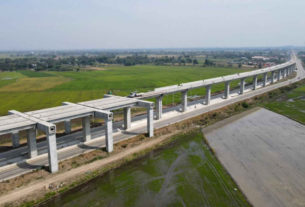WHEN real-estate developers talk about bringing in new technology to their buildings, the natural thought is to imagine they mean new materials, such as better glass or steel, or more advanced forms of pre-cast and prepared materials such as load-bearing pre-cast walls or modular bathrooms – or devices such as more efficient lighting or smarter elevators.
Ananda is currently in the process of introducing two other key “soft technologies” – TQPMS and BIM.
TQPMS stands for “total quality project management system”. It was developed by and is proprietary to our partner, Mitsui Fudosan.
As the name implies, the system is geared towards improving quality, and Mitsui Fudosan, through use of this system, has become the developer in Japan with the highest quality rating. At its heart, it’s simply a way of better tracking during construction to ensure the number of defects is minimised.
Having the highest quality in Japan obviously demonstrates the power of this system, and we began training for and deployment of this system on Ananda projects last year, as our goal is to raise our quality standards in Thailand eventually to reach those achieved by this system in Japan.
The second new technology is BIM, which stands for “building information modelling”. This is a bit more complicated as it involves a software platform requiring training and use by every company in our supply chain.
We recently began this project with a kick-off meeting involving 27 companies in our supply chain. In basic terms, it means every party in the design and construction process works off the same building model – everyone from landscape designers and architects to contractors and construction managers.
The benefits of the system are twofold. First, it reduces the time it takes to complete construction-ready designs by about half, and second, it reduces “clashes” between different parts of the supply chain in effect to zero, which means that problems at the construction stage due to design conflicts are eliminated.
The BIM system is almost universally in use in the UK and is rapidly achieving the same status in the US.
So these soft technologies, including optimised sequencing, can cut design time in half, reduce construction time by 25 per cent, improve quality and lead to a zero defect rate – and all without any new materials, design or device, or anything traditionally thought of as construction technology.
The benefits for home-owners go beyond the obvious improvement in quality (although that’s a huge benefit), as the improvement in the entire design and construction process means fewer hidden defects or weaknesses in the building that could manifest themselves as expensive maintenance years in the future.
Also, the saving of time in design and construction may not seem like a benefit to the customer, but as a public company we judge our performance on how well we earn a return on our shareholders’ money.
By reducing the time that money is locked up in an unfinished building, we can reduce prices to customers while still maintaining the return on that money to shareholders.
So soft technologies have considerable, although often invisible, benefits to customers.
Source: http://www.nationmultimedia.com/business/Soft-technology-expected-to-have-a-big-impact-on-c-30255898.html
